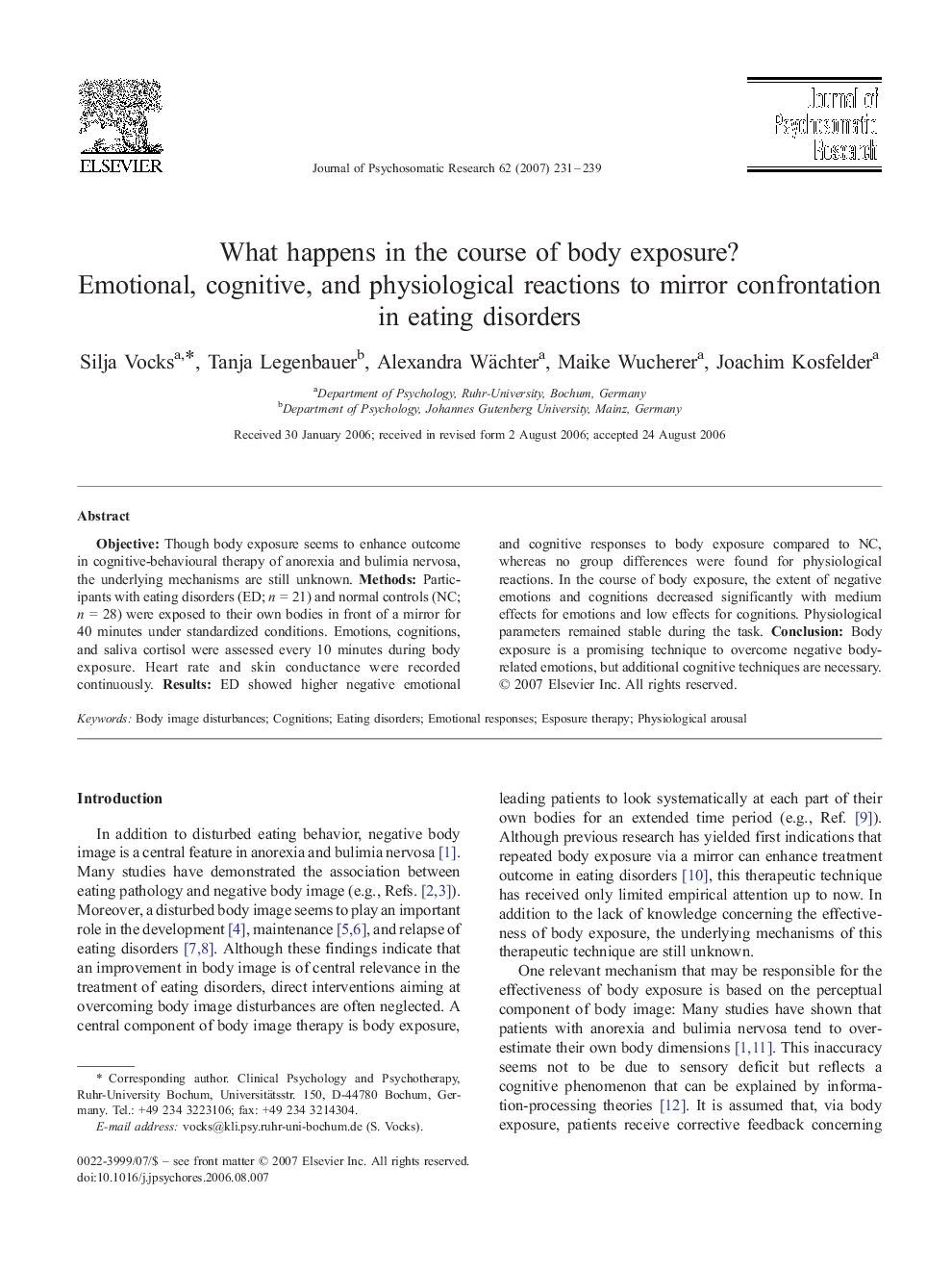| Article ID | Journal | Published Year | Pages | File Type |
|---|---|---|---|---|
| 950478 | Journal of Psychosomatic Research | 2007 | 9 Pages |
ObjectiveThough body exposure seems to enhance outcome in cognitive-behavioural therapy of anorexia and bulimia nervosa, the underlying mechanisms are still unknown.MethodsParticipants with eating disorders (ED; n = 21) and normal controls (NC; n = 28) were exposed to their own bodies in front of a mirror for 40 minutes under standardized conditions. Emotions, cognitions, and saliva cortisol were assessed every 10 minutes during body exposure. Heart rate and skin conductance were recorded continuously.ResultsED showed higher negative emotional and cognitive responses to body exposure compared to NC, whereas no group differences were found for physiological reactions. In the course of body exposure, the extent of negative emotions and cognitions decreased significantly with medium effects for emotions and low effects for cognitions. Physiological parameters remained stable during the task.ConclusionBody exposure is a promising technique to overcome negative body-related emotions, but additional cognitive techniques are necessary.
